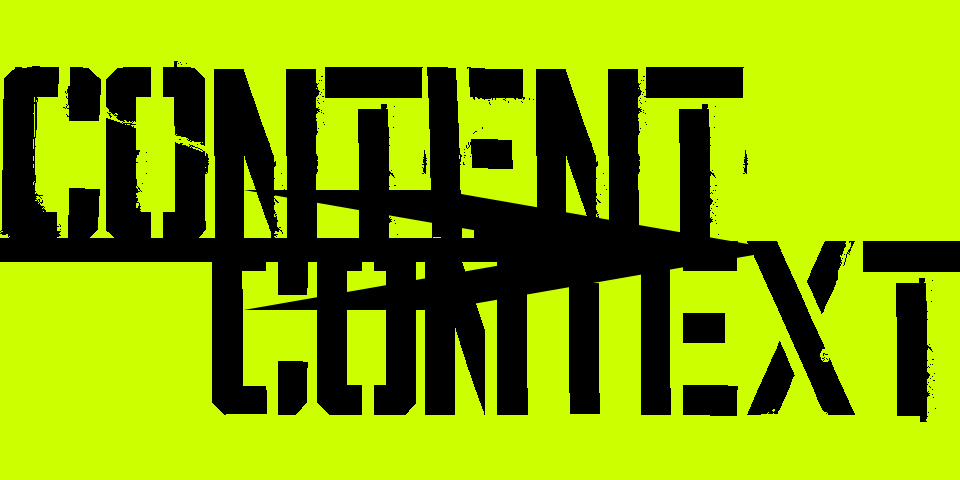
It’s no secret that we are living in an era where everybody is a media company. This is something I have said time and time again, and I will continue to push it because I truly believe that content is the best way to market a product today. Provide value to consumers by creating helpful videos or new recipes or funny cartoons. Give them something they actually want because that content builds up the relationship that then allows you to ask for the sale.
Jab, jab, jab, right hook. Provide value, provide value, provide value, ask for the sale.
But people forget that, now more than ever, great content is predicated on context.
You’ve probably heard this one from me before: “Content is king, but context is God.” I love that that line is quoted so much, but I want to make sure everyone has the tools necessary to execute on that.
I explain it best way back on Episode 8 of the #AskGaryVee Show, in the video below. It just goes to show that context is just as important now as it was a year ago:
THREE TIPS ON CREATING CONTEXT FOR YOUR AUDIENCE
So, what are my top tips for making sure the context is clear? Here are three to get you started:
1) RESPECT THE PLATFORM AND AUDIENCE
First, you’ve got to respect your platforms. Respect the psychology of what people are doing when they’re on the platform. I know a 40-year-old woman is in a different mindset when she’s on Facebook than when she’s on Pinterest. And that is how I story-tell to her. I know on Pinterest she has the intent to shop and on Facebook she’s keeping up with her world. So I strategize around that: the psychology and the platform itself.
Secondly, respect your audience. You have to put out content that she will like rather than content that you will like. Yes, I’d like to sell a bottle of wine. But, if I put it in a way that is more interesting to her, I can make huge strides with her as a consumer. “Five Bottles Under $10 that Help You Get Through the Day When you Have 8 year old Kids.” When you do that, you’ll get into a game that gives you a better chance.
That’s really all there is to it. Respecting the platform. Respecting your audience. And finally, taking your agenda, and making it third.
2) DON’T INTERRUPT THE EXPERIENCE
If you’re truly making good content and considering the context in which that content will be consumed, it won’t interrupt a consumer. If someone is trying to watch a video, the last thing they want is to sit through an ad and wait to see what they really wanted to see because of something you forced them to watch. Got it? The context is so important here. Meet consumers in their day in authentic ways.
I often tell the story of a negative experience I had with an Acura ad. I was on ESPN on mobile and trying to click out of a pop up ad, but it ended up clicking through to Acura’s website instead. My experience was actually sold back to Acura as an “impression” and a “click-through.” Which, for you non-marketers, means intent or interest. And yet nothing could be further from the truth. I had no intent or interest whatsoever. Acura stole my most precious asset: time.
Don’t get me wrong—I’m not mad at ESPN. It’s not their fault why I’ll never buy an Acura.
Why? Because ESPN brings me value. I like them. I want to go there for a quick score or read a headline. So I’m willing to be annoyed for a second because they are bringing me value. Acura, on the other hand, is bothering my experience with an ad and is not bringing me any value whatsoever. Obviously they are bringing someone else value somewhere in the world, and that’s cool. But if they’re trying to bring me in as a new customer, they are failing.
The context in which the consumer experiences your product for the first time matters so much. Do not roadblock them; bring them value.
3) BE CONSISTENT AND SELF AWARE
Every single tweet, every comment you leave, every post, every image you make becomes part of your brand. Period. Every time you post, you need to be laddering it back to your brand’s goals. Your core story needs to be consistent and your personality needs to be constant too. Doing this sets up a larger narrative, the broad context, for your content to succeed and have a clear message.
What you have to do is reverse-engineer: think back to the goal at hand. If you have a clear north star for your company, you can always refer to it when needed. And scaling that North Star to everyone in the company, whether it’s an entry-level employee or VP, is crucial to make sure the context stays consistent.
I am a big fan of the “learn by osmosis” method to scale my company’s goals. Spend as much time with your employees as you can; make it a priority. I’ve talked a lot about how everything stems from the top when it comes to company culture. The same goes for creating context around your company. People will see and view your business by how you choose to make it happen and if you are able to spend a good amount of time with leadership and communicate your thoughts, it will trickle down.
Those are just three things off the top of my head that can help you improve context and thus, your content.
Chapter 7 of my new book, The #AskGaryVee Book, talks all about content and context along with more tactics and tips. It would mean so much to me if you pick up a copy.
Image credit: CC by Ryan Van Etten



